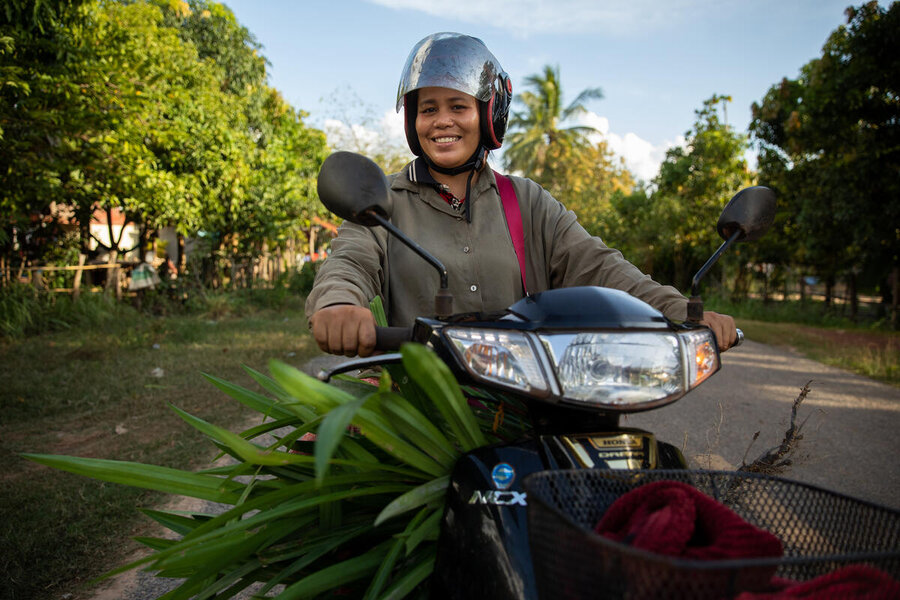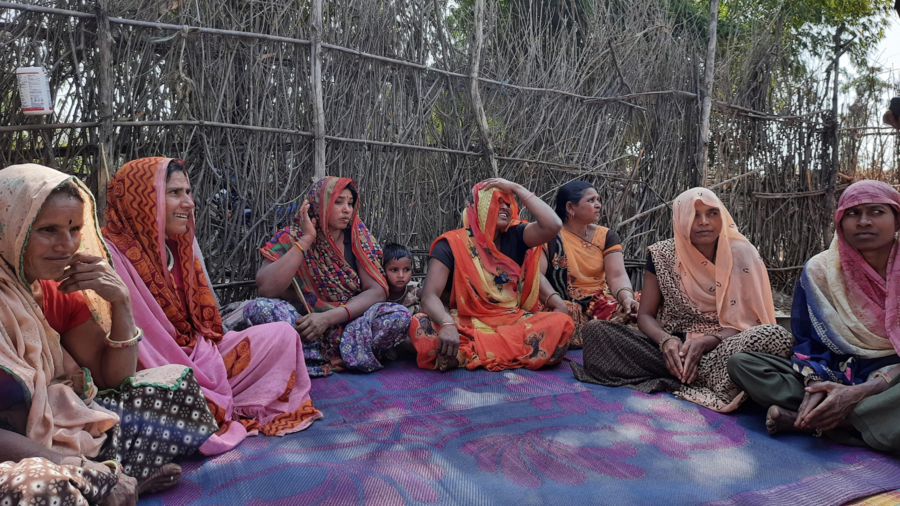Tackling hunger in 2024: Stories you may have missed

In looking back at a year in which the World Food Programme has been responding to major crises - including Gaza, Sudan and Haiti - perhaps it's time to shine a light on other equally important aspects of WFP's work.
Through storytelling and interviews, we seek to show how, alongside our work in emergencies, our resilience-building activities empower people to create food security over the long term; saving lives and changing lives. Below are a few stories you may have missed...
January: Rice to the rescue in South Sudan

It is midday in Halbul, in northern South Sudan, and farmer Nyandeng Noon Agany is visibly exhausted as she walks home in the harsh dry season heat, after spending hours harvesting rice.
Noon’s six children are taking shelter from the searing sun under the porch of their home - a simple structure of wooden poles, a thatched roof and papyrus walls - eagerly awaiting their mother’s arrival.
“Life was really tough not so long ago,” reflects the 36-year-old mother as she removes... Continue reading
February: UN humanitarian air service at 20

Last year alone, UNHAS flew more than 385,000 humanitarian workers from 600 organizations, along with 4,500 tons of relief cargo to places often too remote or conflict-torn for its commercial counterparts.
“When UNHAS took off in 2004, it was a win for the entire... Continue reading
March: Women one the front lines of climate change

From Bolivia to Zambia, the World Food Programme is giving women the tools to cope with weather extremes that threaten livelihoods...
Their faces smeared with a traditional mussiro mask to enhance their skin, the women stoop to pluck shellfish from the mudflats of Ibo Island, off northern Mozambique. Dropped into plastic buckets... Continue reading
Indigenous and Afro-descendant people on the Colombia-Ecuador border tackle climate change

In the Colombia-Ecuador border area, mangroves – forests that appear to float on water – are threatened by pollution, the climate emergency, and violence related to drug trafficking. According to estimates, 10 percent of mangroves have disappeared in the last 10 years at a global level. In this particular area, the loss is estimated at 6 percent, corresponding to almost 145,000 hectares. “The land without a tree... Continue reading
April: In Cuba, farming to tackle climate crisis

Awash with early morning sun, Yankiel Vázquez’s seedling house is a green ocean of tender baby plants. Here, the farmer, who goes by Payo, grows tomatoes, peppers and cabbage until they are big enough to be planted in open fields... Continue reading
May: In Kenya, women power businesses

A group of Kenyan women sits in a circle one recent afternoon, a metal box in the middle. It looks like a toolbox except for three telltale locks. Pocket-sized record books lie strewn on the floor. Money changes hands – many times. For an outsider, the process taking place is difficult to follow, but these entrepreneurs... Continue reading
June: 5 facts about food waste

Global hunger isn't about a lack of food. Right now, the world produces enough food to nourish every child, woman and man on the planet. But nearly a fifth of all food produced each year is squandered or lost... Continue reading
July: AfroCongo start Innoss'B in 60 Seconds

The singer-songwriter – and World Food Programme High-Level Supporter – on dreaming big against the odds in the Democratic Republic of the Congo... Continue reading
August: ‘We did not cause the climate crisis… but our seasons have changed’

“What sets Indigenous food systems apart is that food is not seen as a commodity. It is not something you can buy or sell. For Indigenous Peoples across the globe, food is part of our identity, our culture, our values and beliefs system... Continue reading
September. In Malawi, farmers reel from El Niño

“My child is always crying,” says farmer Martha Kalumbi. “Doctors tell me she is starving and getting malnourished. I’m afraid that my baby may die.”
Kalumbi, 40, lives in the village of Thumpwa in Malawi’s Phalombe district, where the fields look torched by drought.
With the maize crop destroyed, there is barely any food. “The situation really hurts... Continue reading
October: Super nutritious foods around the world
Patricia Loput (not pictured) wants to be a doctor, and thinks potatoes - specifically orange flesh sweet potatoes - will get her there.
“I have learnt so many things at school, including growing sweet potatoes,” says Patricia, 16, who attends Namalu Mixed Primary school, in Uganda’s eastern Karamoja subdistrict. “I plant crops that I can sell to pay my school fees, and buy... Continue reading
November: A women's bakery in Afghanistan

The call to prayer from a neighbouring mosque wakes Bibi Sharifa and her four sisters at first light. They share a modest breakfast of naan, the traditional flatbread, and fragrant green tea. Then they settle into work, at a bakery nestled in the heart of their living room.
“We used to bake around 200 loaves a day, but could only sell half,” says Sharifa, a mother of nine who beams with pride as she describes how business has... Continue reading
December: Land restoration in the Sahel

Ba grew up helping her parents clear their fields, sow seeds, harvest crops and gather fodder to feed their livestock. Now she heads a local women’s cooperative. Farming has been a lifeline in Mauritania, helping entire families survive and sometimes prosper for decades.
“What I love in this village is agriculture,” says Ba, who is widowed and has three children. “It’s the only activity we are familiar with, and one that helps us meet our families’ needs... Continue reading



